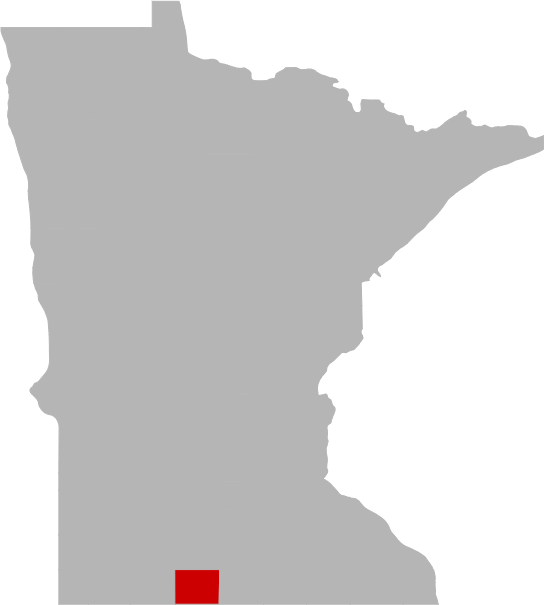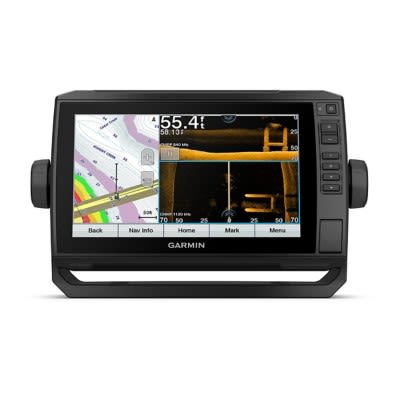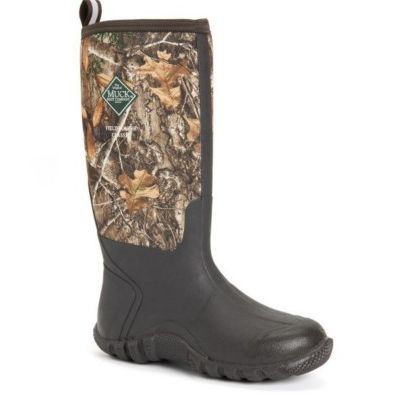Today's Best Fishing Times
Get the best fishing times for Cedar Lake with Lake-Link's Fishing Forecast. SEE MORE

Share your catch!
We want to see what you've caught on Cedar Lake.Frequently Asked Questions About Cedar Lake, MN
- How big is Cedar Lake?
- How deep is Cedar Lake?
- What kind of fish can you catch in Cedar Lake?
- What are the closest cities to Cedar Lake?
- Are there places to stay in the Cedar Lake area?
- Are there boat launches on Cedar Lake?
- Are there places to eat and drink near Cedar Lake?
- What is the average air temp for Cedar Lake?
- Are there any state parks near Cedar Lake?
How big is Cedar Lake?
How deep is Cedar Lake?
What kind of fish can you catch in Cedar Lake?
Other fish species in the lake include Common Shiner, Emerald Shiner, Fathead Minnow, Freshwater Drum, Golden Shiner, Green Sunfish, Orangespotted Sunfish, Quillback, Spotfin Shiner, Spottail Shiner and White Sucker.
What are the closest cities to Cedar Lake?
Are there places to stay in the Cedar Lake area?
More Lodging Options
Are there boat launches on Cedar Lake?
Are there places to eat and drink near Cedar Lake?
Explore the Cedar Lake area in a RV
Are you looking for an adventurous vacation option that won't break the bank? Look no further than renting an RV! Contrary to popular belief, the process is much simpler than you might imagine. With just a few easy steps, you'll soon be experiencing the ultimate freedom and convenience of exploring the open road in your very own recreational vehicle. And the best part? RV travel can save you up to 60% compared to other types of vacations! With the money you'll save, you'll be able to travel even more and create unforgettable memories along the way. So why wait? Start planning your next adventure today with an RV rental. Learn more about renting a RV.



2020 Lightning Aluminum Enclosed 5-place Snowmobile Trailer
Lakeville, MN

History & Status of the Fishery
INTRODUCTION
Cedar Lake is a 710-acre Minnesota DNR class 43 lake with a north and south basin. Located 1 mile west of Trimont in Martin County, Cedar Lake only reaches depths of 7 feet in the north basin but boasts 9.5 miles of shoreline. Locally, the lake is actually considered 2 separate lakes, but for fish management they are considered one lake due to connectivity that allows fish to freely swim between lakes. Cedar Lake is also connected to Buffalo Lake and Fish Lake from the North and Little Twin Lake from the south as well as several small wetlands that all make up decent habitat for Northern Pike. Because of the abundance of decent habitat for Northern Pike and because Northern Pike are tolerant of low dissolved oxygen, which Cedar Lake commonly experiences during winter, the lake is managed first for Northern Pike. Secondarily, Black and White Crappie as well as Walleye and Yellow Perch are managed to create additional game fishing opportunities. Cedar Lake recently experienced very low dissolved oxygen levels of less than 1 ppm for several months during the winter of 2013-2014. At ice-out in the spring of 2014 many dead fish were observed along the shoreline, mainly Common Carp, Bigmouth Buffalo, Freshwater Drum, and some game fish. A spring trap net assessment revealed 11 species of fish remained alive in the lake despite the low oxygen levels and all managed species listed above were still present in good numbers. However, a follow-up population assessment was conducted in June of 2014 to continue to regularly monitor the population and determine the severity of the winterkill to see if numbers of game fish were more or less than expected compared to past assessments.
NORTHERN PIKE
Historically, Cedar Lake has been known as a good lake for Northern Pike fishing. Northern Pike have been stocked as fingerling in 1984, 1985, 1986, and 1989. In addition, Buffalo Lake has been stocked with fingerling only once in 1994 while Fish Lake has been stocked with various sizes of Northern Pike frequently since 1979 with the most recent stocking of fingerling in 2014. While Northern Pike are regularly stocked in these lakes there are times when successful natural reproduction adds to the population. However, there is a need to protect and potentially enhance the remaining spawning habitat within the connected lakes to ensure future success of the Northern Pike. The historical survey netting since 1986 in Cedar Lake indicates an average gill net catch of 6.7 per net. The typical Windom Fisheries Management Area class 43 Lake has an average gill net catch rate of only 2.2 Northern Pike per net as of 2014, so Cedar Lake's historical catch rate is high compared to other Windom area lakes. Prior to the 2014 survey the gill net catch rate ranged from a low of 2.7 per gill net in 1995 to a high of 16.7 per gill net in 2004. However, following the winterkill in 2013-2014 the June 2014 gill net catch rate was 0 per net. Although, the post winterkill spring trap netting revealed Northern Pike were still present in the lake, but their numbers were obviously reduced by the winterkill due to 0 fish caught in June. It is possible that some Northern Pike moved to either Buffalo Lake or Fish Lake during higher water levels in June, but the population has never before been at a level that resulted in 0 fish being caught in June sampling. As a result, 353 adult Northern Pike were stocked in December of 2014 to boost the adult population. Also, the fingerling stocking in Fish Lake in June 2014 may also contribute to the catchable population in Cedar Lake in the future and boost levels to a more normal range. Cedar Lake will be resurveyed in 2018, if at that time the Northern Pike population has not fully recovered additional restocking may be needed. Overall, it appears that the Northern Pike population is poised to make a quick recovery from the 2013-2014 winterkill even though no fish were caught in June.
CRAPPIE
Cedar Lake is home to 2 species of crappie, Black Crappie and White Crappie. Since 1986, the Black Crappie trap net catch rate has averaged 14.5 per net and the White Crappie trap net catch rate has averaged 11.8 per net. During the 2000's, there was a boom in crappie numbers in Cedar Lake and the Black Crappie catch rate ranged from 23.0 per trap net in 2000 to 29.9 per trap net in 2004. During the same time the White Crappie catch rate ranged from 2.1 to 20.6 per trap net. In 2014, the catch rates for Black Crappie and White Crappie were 2.6 per trap net and 0.3 per trap net respectively. It is apparent that the winterkill of 2013-2014 had a negative impact on the Crappie population in Cedar Lake. Regardless of the negative effect of the winterkill, the remaining Black and White crappie ranged in length from 6.7 to 10.9 inches and 6.5 to 10.0 inches respectively indicating spawning aged adults still remained in the lake. In addition, the post winterkill spring sampling revealed 1.8 Black Crappie and 0.5 White Crappie per trap net that ranged from 5.8 to 10.3 inches for Black Crappie and 8.3 to 10.1 inches for White Crappie. Additionally, the Black Crappie and White Crappie in the sample were plump, indicating good body condition and health. It appears that the two species of Crappie are also poised for a quick recovery from the 2013-2014 winterkill. Good numbers of spawning adult fish are still present that will most likely lead to successful reproduction in 2015 and beyond. The population will be monitored closely, and the follow-up lake survey in 2018 will help to inform the need for re-stocking if the population does not recover as expected.
WALLEYE
Walleye were first stocked in Cedar Lake in 2001 when fry were introduced. Prior to that however, Walleye were first observed in Cedar Lake netting in 1996 with a catch rate of 8.9 per gill net. Walleye were observed again in 2000 with a catch rate of 5.3 per gill net. These Walleye in Cedar Lake were determined to be from downstream drift of Walleye from Fish Lake. Fish Lake has been stocked occasionally with Walleye since 1991. With good catch rates in Cedar Lake in 1996 and 2000, Walleye were added to the managed species list and fry stocking started in 2001, and was continued in 2004, 2007, 2010, 2013, and 2014. In addition, Walleye fingerlings were stocked in September of 2014 following the winterkill in 2013-2014 to boost the recovery of the population. During the post winterkill netting in the spring of 2014, 8 Walleye ranging from 16.6 to 19.5 inches were caught in 6 trap nets. In the June netting in 2014, 3.3 Walleye were caught per gill net and 0 Walleye were caught in trap nets. The gill net catch rate is within the normal range but is less than the long-term Cedar Lake average catch rate of 5.1 per gill net. The lower catch rate in 2014 led to the fall stocking of fingerling mentioned above. The size of Walleye caught in the June 2014 netting ranged from 9.7 to 20.6 inches with a mean of 17.7 inches. The size range of the fish in the sample was skewed toward larger fish indicating that the population of Walleye in Cedar Lake may be dominated by large fish with little smaller fish to replace them as they die. Therefore, this also led to the stocking of fingerling in the fall of 2014 to help balance the size structure of the population. Future stocking in Cedar Lake will be with Walleye fry, but follow-up fish netting in 2018 will help to determine if additional fingerling stocking is needed to boost the population. Overall, it appears that the Walleye population in Cedar Lake weathered the winterkill of 2013-2014 well and the population should recover quickly.
YELLOW PERCH
Even though Cedar Lake experienced a partial winterkill during 2013-2014, The Yellow Perch did not seem to be as affected as Northern Pike, Crappie, or Walleye. The Yellow Perch post winterkill trap net catch rate during the spring of 2014 was 58.7 per net and the June 2014 catch rates were 31.3 per gill net and 1.0 per trap net. The June gill net catch was the third highest ever observed and greater than the historical gill net catch rate average of 24.7 per gill net and also greater than the class 43 upper normal range. Additionally, the trap net catch rate of 1.0 per net was equal to the historical trap net average and within the normal range for lake class 43. The Yellow Perch in the gill net sample ranged from 5.3 to 10.8 inches with a mean of 9.3 inches and the Yellow Perch in the trap net sample ranged from 4.9 inches to 10.2 inches with a mean of 7.0 inches. The size distribution of the Yellow Perch in the gill net and trap net was dominated by larger fish. Additionally, the body condition of the fish in the sample was good indicating a healthy population of Yellow Perch. While Cedar Lake received a re-stocking of Northern Pike and Walleye, Yellow Perch were not in need of re-stocking. The population appears to be doing much better than the other game fish in the lake and can be considered recovered from the winterkill of 2013-2014. Future success in spawning will help the Yellow Perch population regain some size balance that was skewed toward larger fish during 2014. Additionally, habitat conservation and establishment of downed trees along the shoreline and submerged vegetation should continue to help the population remain fishable.
OTHER SPECIES
Other species sampled during the June 2014 netting survey were Bigmouth Buffalo, Black Bullhead, Common Carp, Golden Shiner, Orangespotted Sunfish, Quillback, White Sucker, and Yellow Bullhead. Bigmouth Buffalo, Common Carp, and White Sucker gill net catch rates were all within the normal class 43 catch ranges but the Black Bullhead gill net catch rate was less than the class 43 normal range. All species but the Yellow Bullhead trap net catch rate was within the class 43 normal catch rate ranges, the Yellow Bullhead trap net catch rate was less than normal for a class 43 lake. Interestingly, Channel Catfish, Freshwater Drum, and Bluegill were absent from the post-winterkill netting and June 2014 netting indicating either a very low abundance population still exists that avoided the nets or these species are now absent from Cedar Lake. Future monitoring in 2018 with a regularly scheduled netting assessment will be conducted to further assess the non-managed species mentioned above.
SUMMARY
Overall, it appears that the winterkill of 2013-2014 did have an effect on the Northern Pike, Crappie, and Walleye in Cedar Lake but it did not seem to adversely impact the Yellow Perch. However, June netting revealed that the current population levels of Northern Pike and Crappie are sufficient to recolonize the lake. In addition, re-stocking of Northern Pike and Walleye in 2014 will help to speed up the recovery of those populations. With adequate winter dissolved oxygen levels and good spring spawning conditions in 2015, the game fish populations should flourish. A possible benefit of the 2013-2014 winterkill is the lack of Channel Catfish and Freshwater Drum found in netting in Cedar Lake in 2014. If populations of Channel Catfish and Freshwater Drum are in fact removed from the lake, it will free up resources and reduced unwanted competition with game fish. A future lake survey in 2018 using gill nets and trap nets in June will help to monitor the long-term health of the fish communities and the lake as a whole. For now, Cedar Lake appears to be making a good recovery from the winterkill of 2013-2014. If you have further questions or concerns about Cedar Lake, or any other Windom Fisheries Management Area Lake please contact the Windom Fisheries Management Office by calling 507-831-2900 or e-mailing at [email protected].
By Nate Hodgins
What is the average air temp for Cedar Lake?
Are there any state parks near Cedar Lake?
For more Minnesota State Park information see our State Park Guide.
More Nearby Lakes To Explore
There's more lake's to explore around Cedar Lake...| DISTANCE | ACRES | MAX DEPTH | |
| Little Twin Lake | 2.5 mi | 68 | 9 ft |
| Big Twin Lake | 3.1 mi | 461 | 18 ft |
| Fish Lake | 4.1 mi | 156 | 5 ft |
| Clam Lake | 4.5 mi | 71 | 8 ft |
| Fox Lake | 7.3 mi | 951 | 20 ft |
| Temperance Lake | 8.5 mi | 166 | 5 ft |
| Long Lake | 9.2 mi | 263 | 13 ft |
| Kansas Lake | 9.5 mi | 403 | 7 ft |
| Perch Lake | 13.0 mi | 174 | 5 ft |
| Butterfield Lake | 13.0 mi | 54 | 10 ft |


















